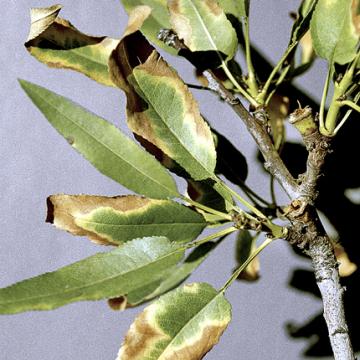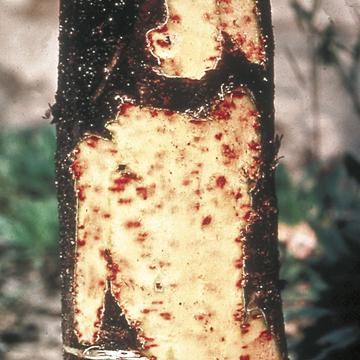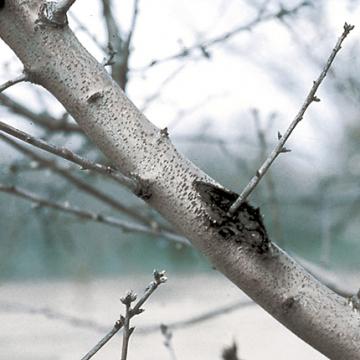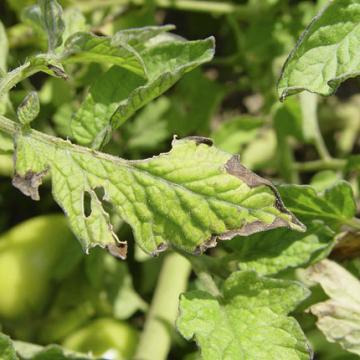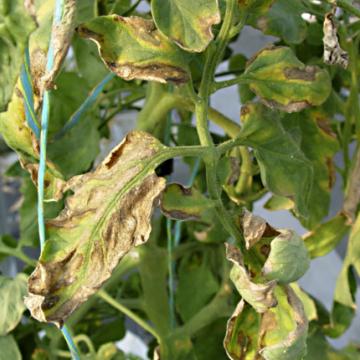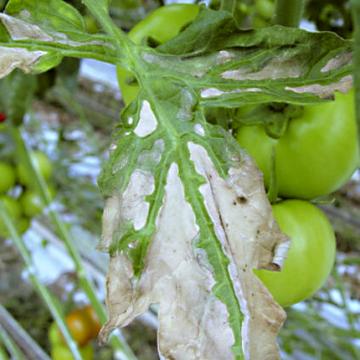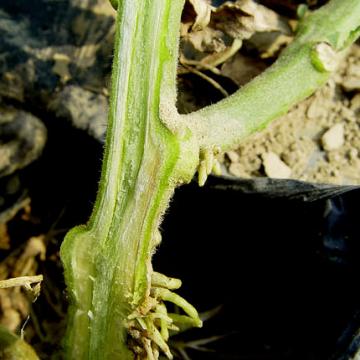DISEASE: Almond leaf scorch
HOST: Almond
Light brown necrotic (scorched) areas on curling leaves.
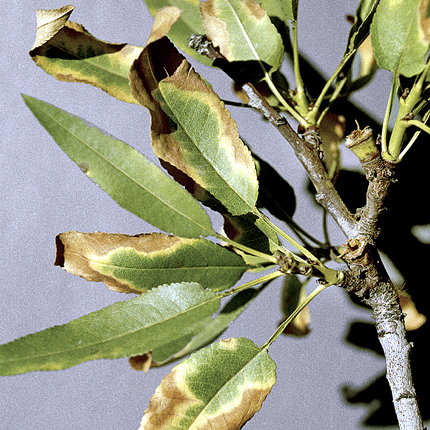
Almond leaf scorch | Almond
DISEASE: Almond leaf scorch
HOST: Almond (Prunus dulcis)
PATHOGEN: Xylella fastidiosa
SOURCE: W. Sinclair
DISEASE: Almond leaf scorch
HOST: Almond
Dying almond trees with scorched appearance. Initial symptoms are marginal chlorosis, usually late in the year. Scorch often is first noted at leaf tips, symptoms worsen, and terminal branches may die.
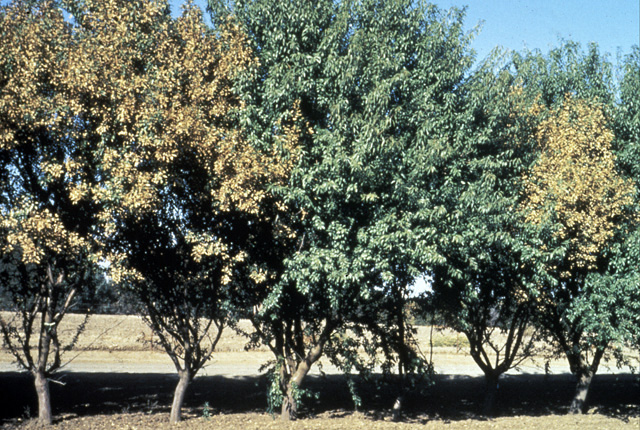
Almond leaf scorch | Almond
DISEASE: Almond leaf scorch
HOST: Almond (Prunus dulcis)
PATHOGEN: Xylella fastidiosa
SOURCE: R. Davis, M. Davis
DISEASE: Bacterial blight
HOST: Soybean
Leaves with yellowish brown necrotic lesions. Lesions also may be yellow to light brown and bordered by yellowish green halos. Lesions occur on stems, petioles, and pods.
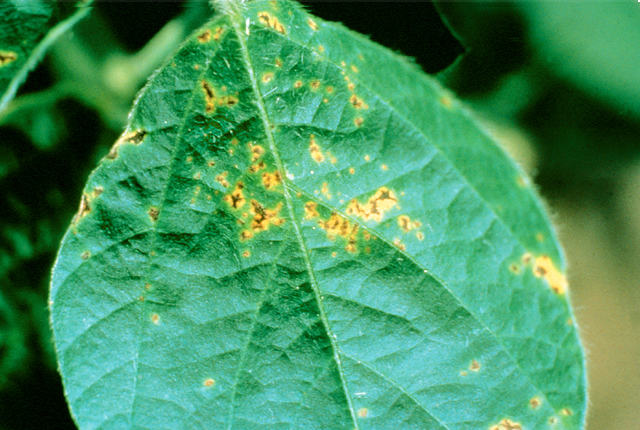
Bacterial blight | Soybean
DISEASE: Bacterial blight
HOST: Soybean (Glycine max)
PATHOGEN: Pseudomonas syringae pv. glycinea
SOURCE: J. B. Sinclair
DISEASE: Bacterial canker
HOST: Almond
Infected tissues with reddish necrotic spots, a key diagnostic symptom for the disease. Spots and streaks are commonly seen when bark is removed.
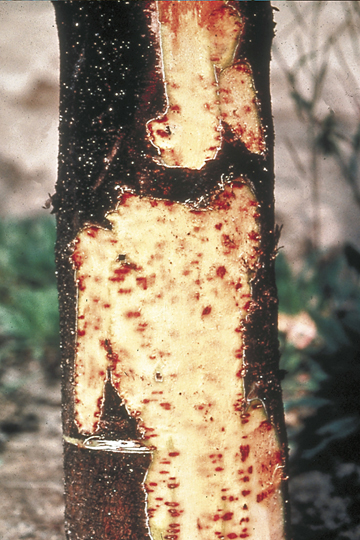
Bacterial canker | Almond
DISEASE: Bacterial canker
HOST: Almond (Prunus dulcis)
PATHOGEN: Pseudomonas syringae pv. syringae
SOURCE: B. Teviotdale
DISEASE: Bacterial canker
HOST: Almond
Diamond-shaped canker on infected limb. Such cankers are common on small limbs and spurs.
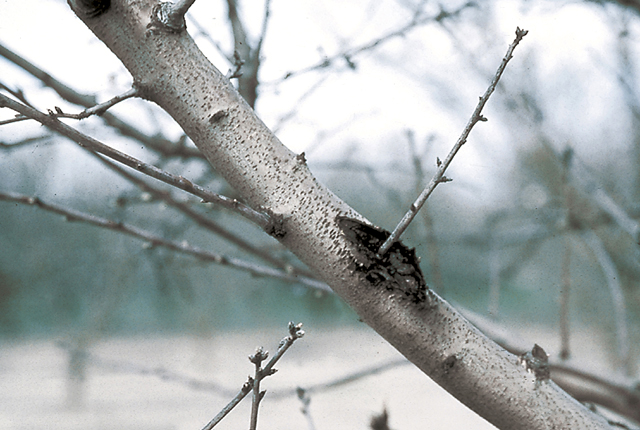
Bacterial canker | Almond
DISEASE: Bacterial canker
HOST: Almond (Prunus dulcis)
PATHOGEN: Pseudomonas syringae pv. syringae
SOURCE: B. Teviotdale
DISEASE: Bacterial canker
HOST: Tomato
Necrosis of leaf margins is early symptom of disease.
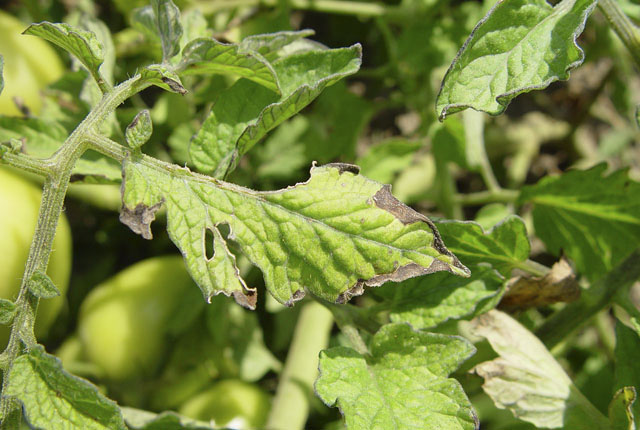
Bacterial canker | Tomato
DISEASE: Bacterial canker
HOST: Tomato (Lycopersicon esculentum)
PATHOGEN: Clavibacter michiganensis subsp. michiganensis
PATHOGEN SYNONYM: Corynebacterium michiganense
SOURCE: S. Miller
DISEASE: Bacterial canker
HOST: Tomato
Leaves with interveinal necrosis.
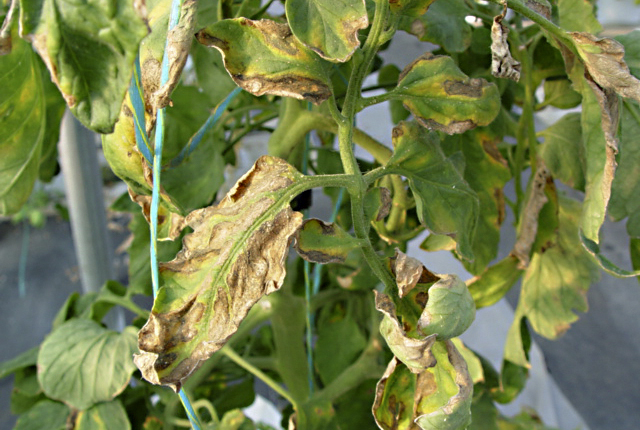
Bacterial canker | Tomato
DISEASE: Bacterial canker
HOST: Tomato (Lycopersicon esculentum)
PATHOGEN: Clavibacter michiganensis subsp. michiganensis
PATHOGEN SYNONYM: Corynebacterium michiganense
SOURCE: D. Ingram
DISEASE: Bacterial canker
HOST: Tomato
Leaves with papery, gray necrotic areas around green veins.
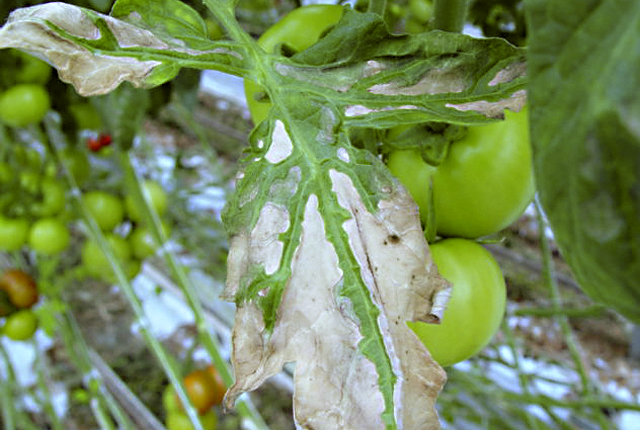
Bacterial canker | Tomato
DISEASE: Bacterial canker
HOST: Tomato (Lycopersicon esculentum)
PATHOGEN: Clavibacter michiganensis subsp. michiganensis
PATHOGEN SYNONYM: Corynebacterium michiganense
SOURCE: D. Ingram
DISEASE: Bacterial canker
HOST: Tomato
Sliced stem with yellowish brown discoloration of vascular tissues.
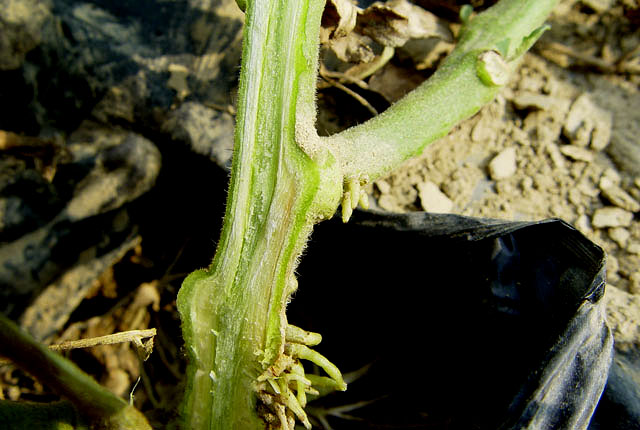
Bacterial canker | Tomato
DISEASE: Bacterial canker
HOST: Tomato (Lycopersicon esculentum)
PATHOGEN: Clavibacter michiganensis subsp. michiganensis
PATHOGEN SYNONYM: Corynebacterium michiganense
SOURCE: S. Miller


